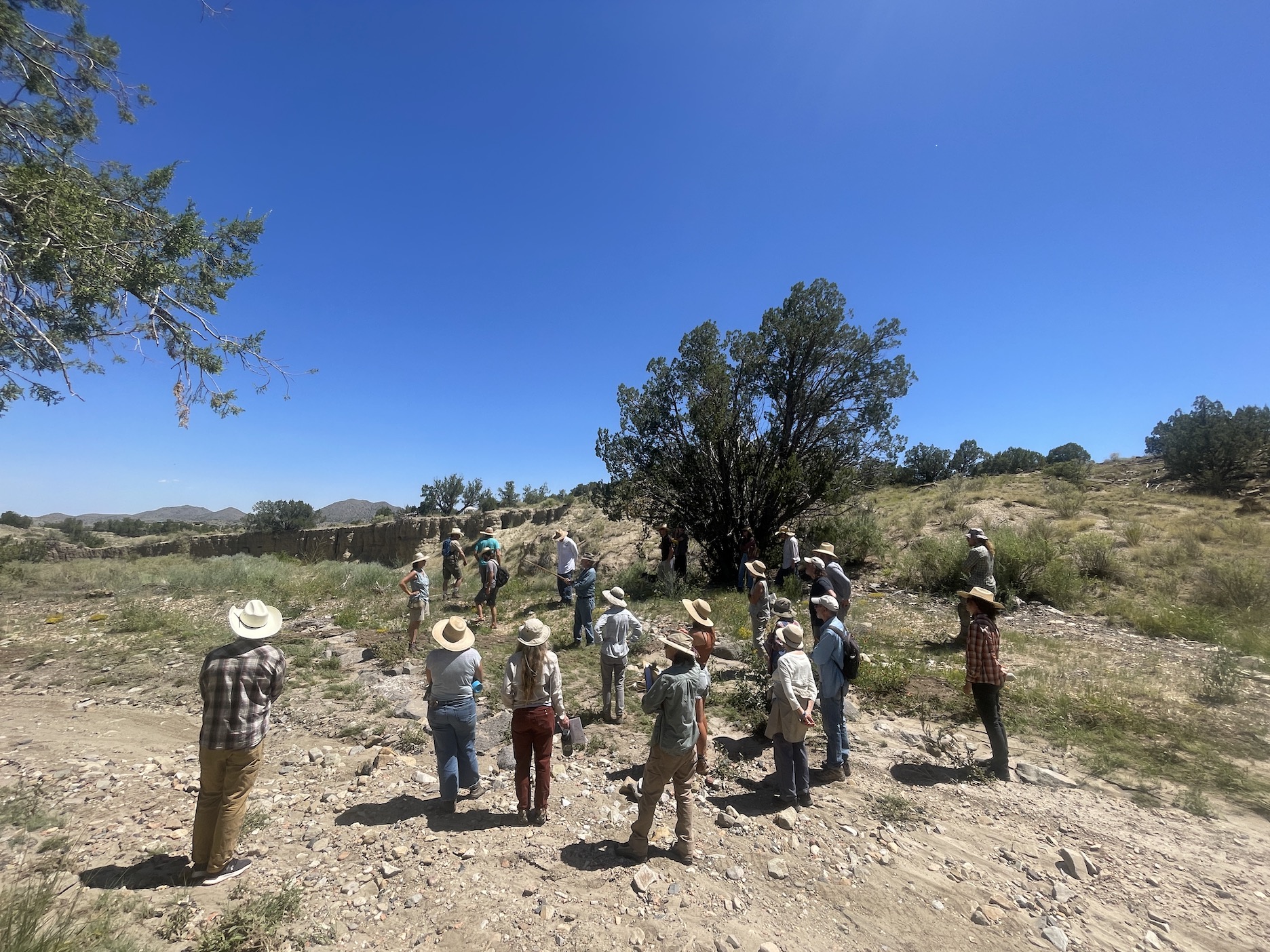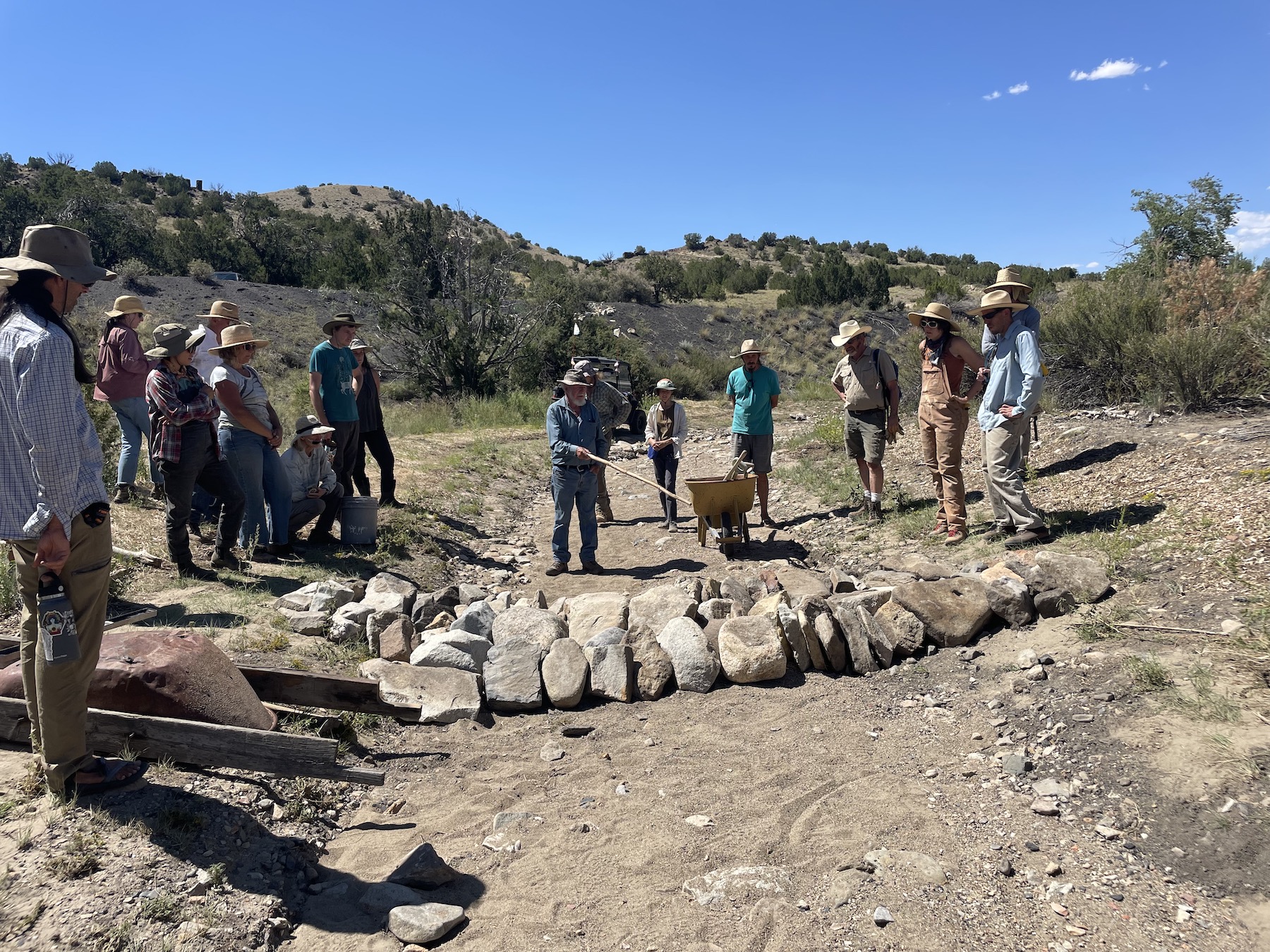Earlier this month, Ampersand Sustainable Learning Center held a Watercare Workshop day with Bill Zeedyk near Madrid, New Mexico.
In the morning, we walked the channel and observed how a recently completed large-scale restoration project responded to floodwaters that came through a few days before.
At one point, we stopped at a deeply incised bank.
Bill Zeedyk asked “Would it make a difference to raise the creek bed a foot or two?” After we discuss for a while, he expands…
These bottom layers at the bank are cobble deposits and that’s the layer that now receives the floodwaters. And with cobble layers, water will infiltrate fast but water also leaves it fast, and it mostly travels horizontally. So there’s less chance of it reaching the roots at the top trying to find water down below.
The next layer higher up are the clay and organic matter soils, that’s indicative of a former wetland. With clay soils, water will seep into them slowly and it also leaves more slowly. And clay soils have the capacity to wick water up through it!
So over time, if the creek bed is lifted even a foot or two by sediments dropping with the aid of in-stream structures, the floodwaters have a better chance of rising within that cobble layer high enough to reconnect with the clay layer, where water can then be wicked up and meet those roots looking for water.

We continued to make our way downstream, observing how a recently completed large-scale restoration project had responded to floodwaters that came through just days before. Then we broke for lunch.
In the afternoon, all hands were in the dirt! Adding new one rock dams and baffles as well as tending to a structure impacted by the recent flood (here’s a short video Ampersand created of the day).
No workshop day is complete without a final walk through the newly built features to see what we can learn.

What’s unique about this one rock dam?
In what ways has it been built well?
What alterations could we do to make it more effective and more likely to stand the test of time?
To learn more about this ongoing project (and the tweaks Andy and Amanda Bramble did post-workshop), check out their Ampersand newsletters.
